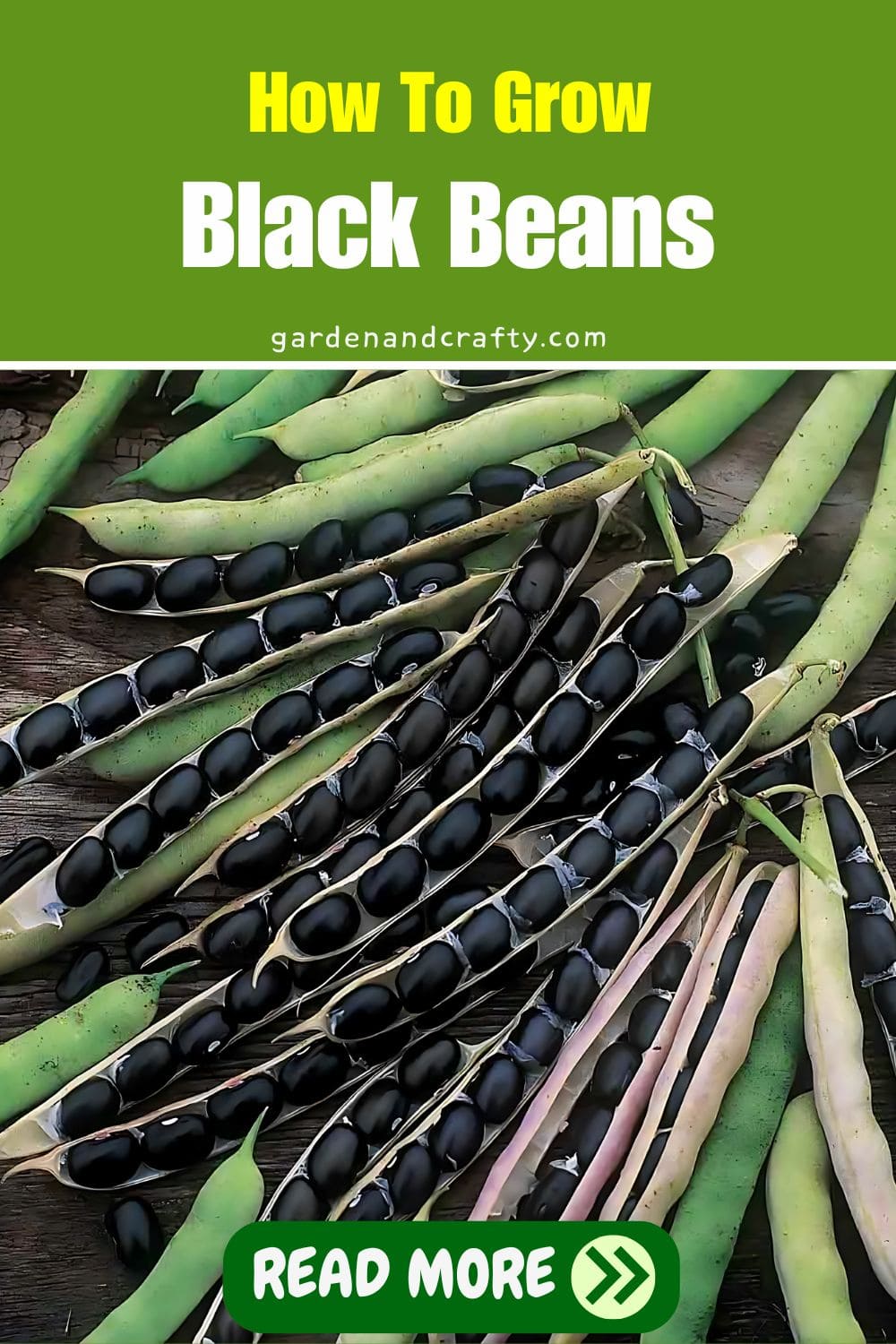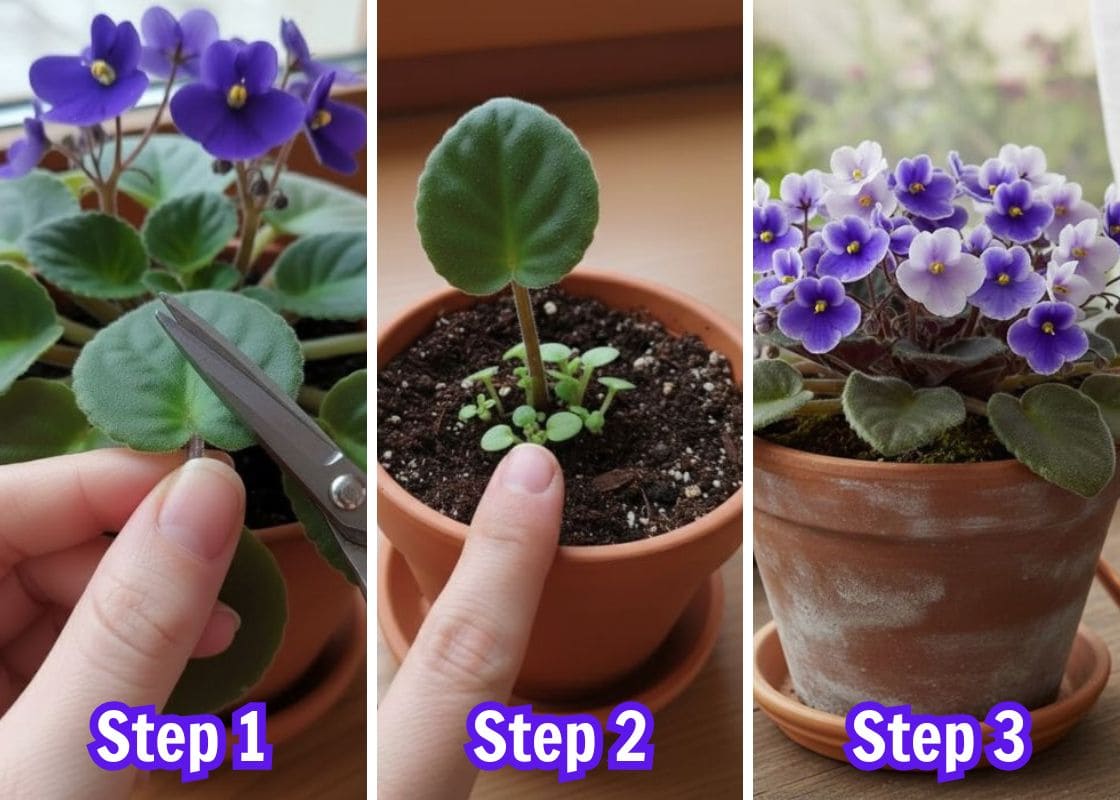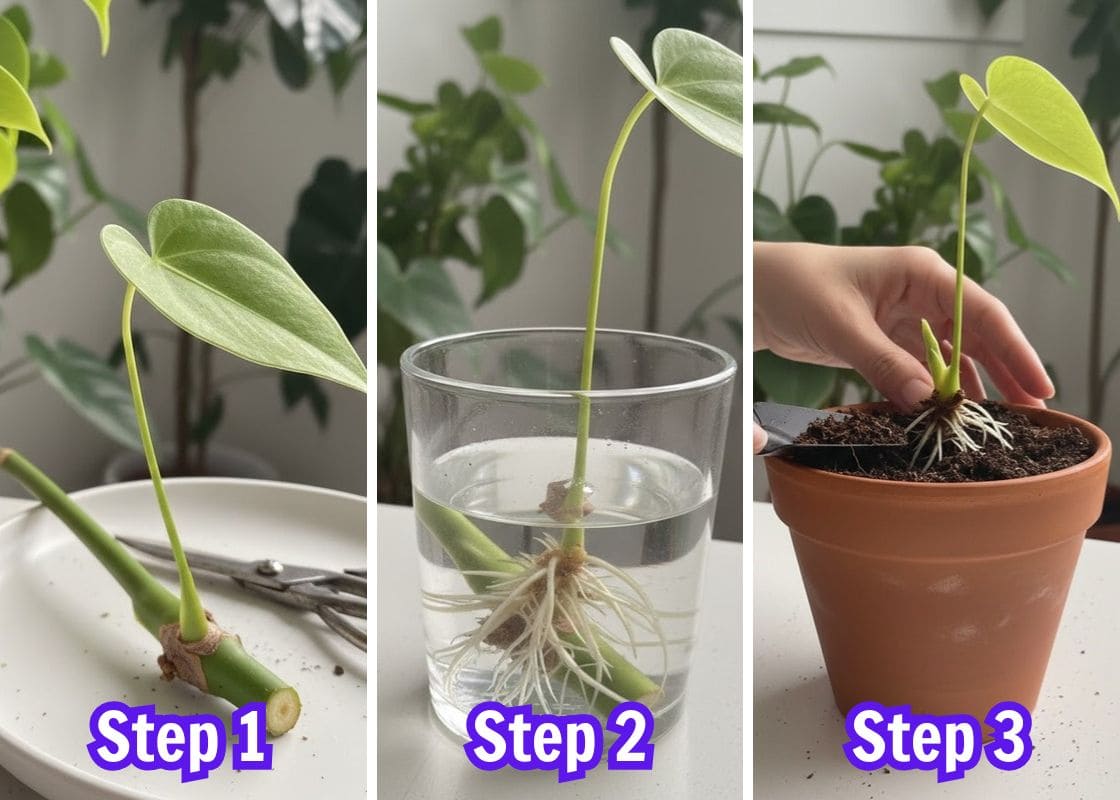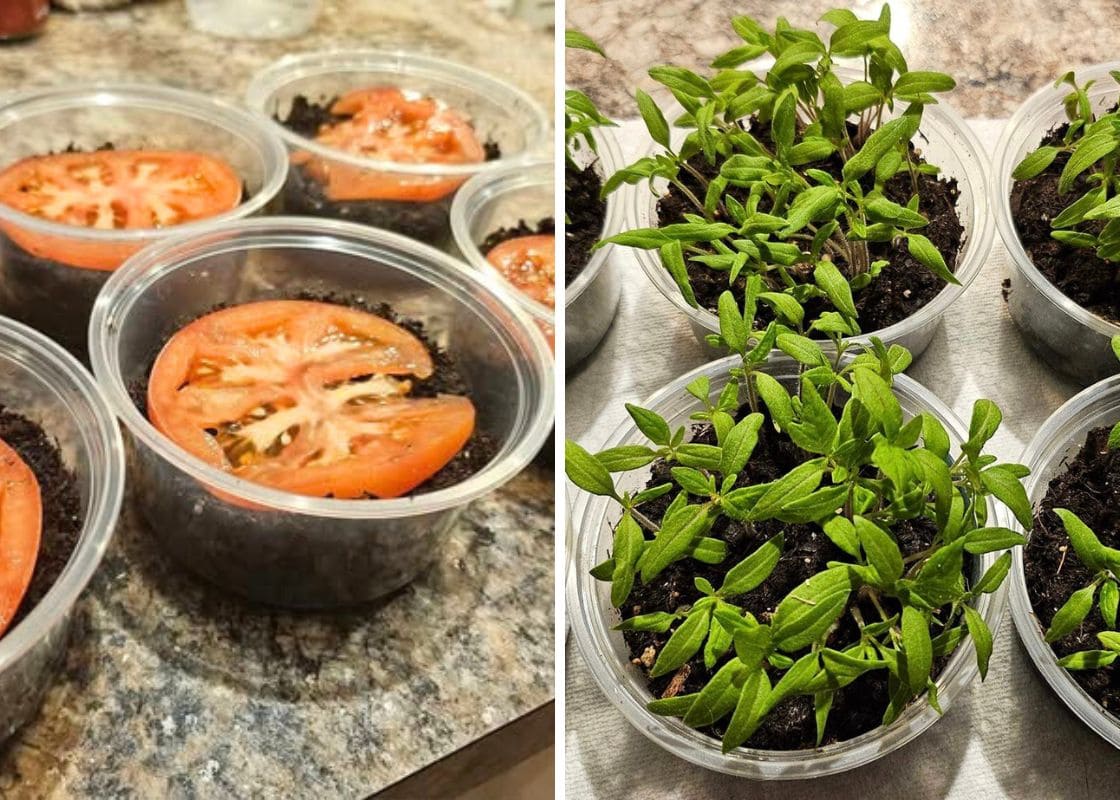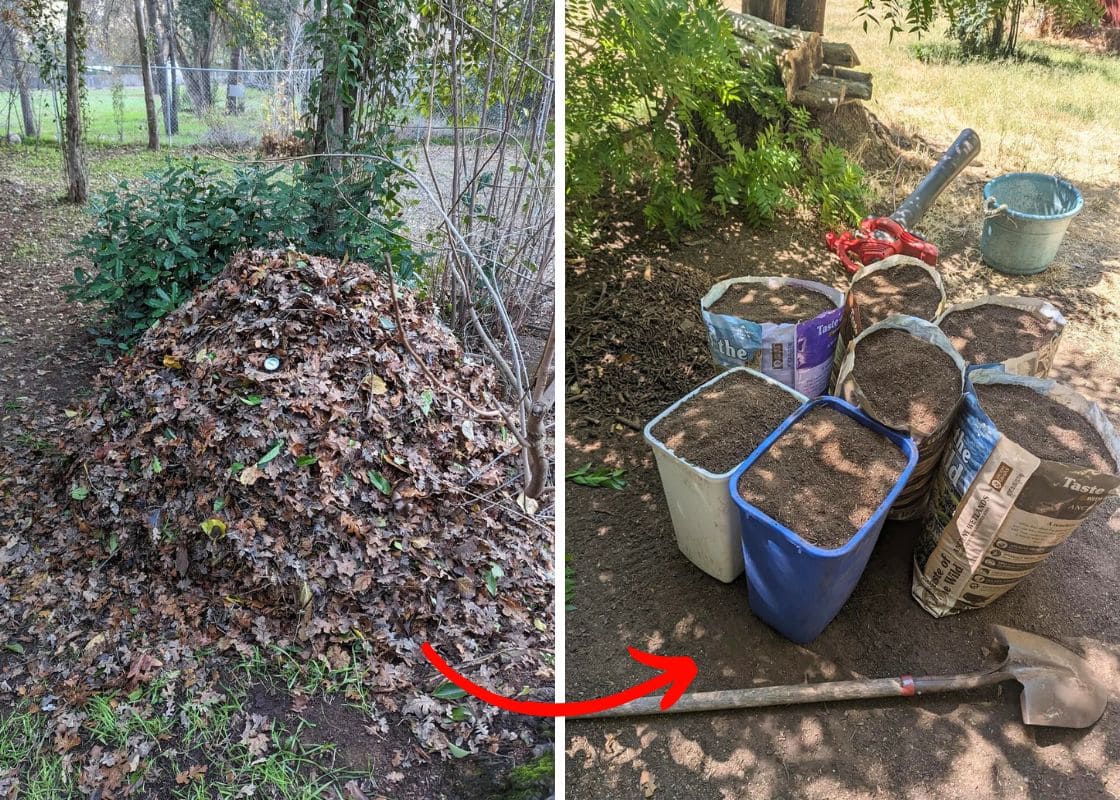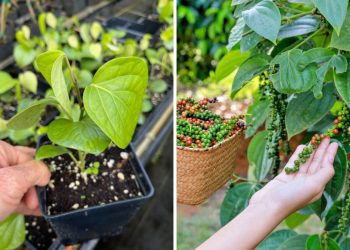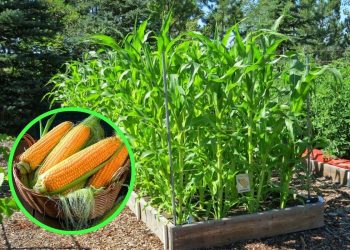Legumes are not only are rich in protein, fiber, folate, and iron but also enrich soil nutrients as well as are great for crop rotation.
They are also perfect for soups, salads, and main courses with their creamy texture and earthy flavor.
That’s why whether you’re new to gardening or experienced, you should grow black beans to boost your garden’s productivity and add nutrition to your meals.
Summary:
- You need to soak black bean seeds, plant seeds 1-2 inches deep, spaced 3-4 inches apart, then use a trellis for climbing varieties.
- Ensure 6-8 hours of sunlight daily, water consistently and consider organic matter to improve soil structure.
- You should harvest beans when pods are firm and dry, typically 90-120 days after planting.
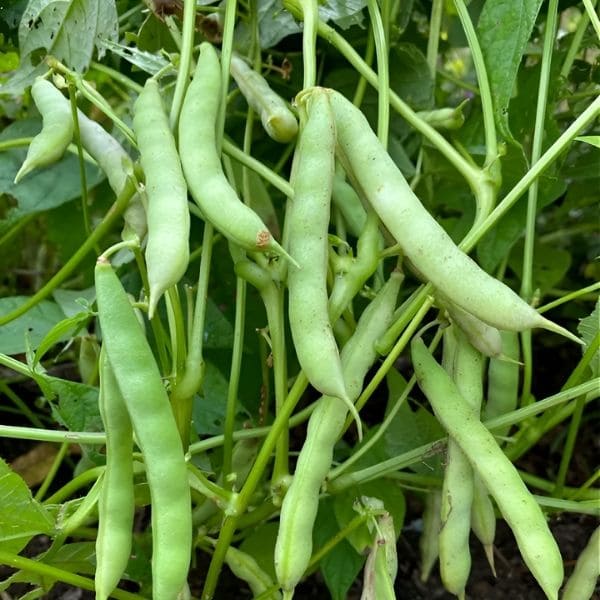
| Scientific name | Phaseolus vulgaris |
| Common name | Black bean |
| Family | Fabaceae |
| Plant Type | Annual |
| Height | 20-60 cm |
| Sunlight | Full un |
| Soil | Well-drained |
| Growth habit | Bush or vine |
| Flower | White, purple |
| Native Area | Americas |
Preparation
Black Beans Seeds
There are many types of black beans and here are five popular varieties:
- Black turtle beans: Small, shiny seeds with a creamy texture, widely used in Latin American cuisines. Typically it produces 20-30 seeds per plant.
- Black valentine beans: Heirloom variety with glossy black seeds, offering a rich, hearty flavor. It produces about 25-35 seeds per plant.
- Black magic beans: High-yielding variety known for disease resistance and mild flavor, with each plant producing 30-40 seeds.
- Domino beans: Medium-sized beans with a deep, rich flavor ideal for canning, typically yielding 25-35 seeds per plant.
- Condor beans: Robust, earthy beans suitable for long-term storage, producing about 40-50 seeds per plant.
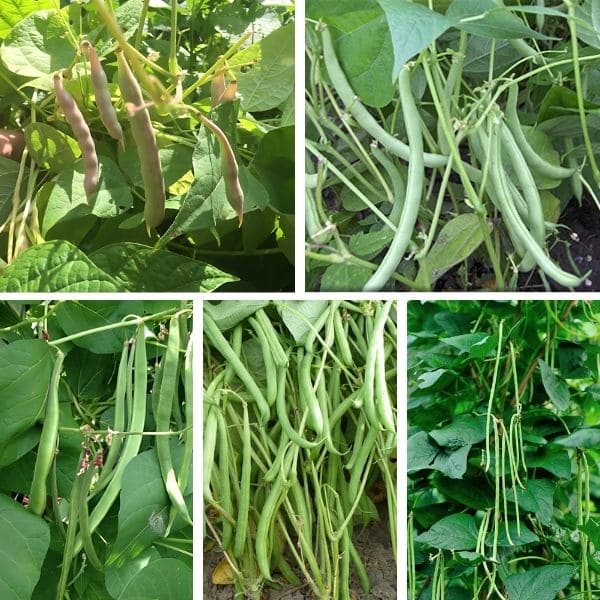
You need to place the dried beans in water overnight or for 6-8 hours to soften their tough outer coat and make the seeds sprout faster.
Also, consider using a legume inoculant, which is a natural bacteria that aids in fixing nitrogen from the air into the soil.
This is especially helpful if your soil hasn’t had legumes before.
Planting Site
You should choose a spot in your garden that receives at least 6-8 hours of sunlight daily, and is unobstructed by other plants or shade sources.
Soil
You need to loosen the soil to 6-8 inches to help roots spread and improve drainage, then clear the area of weeds and debris.
Black beans don’t need fertilizer, but I recommend adding compost or well-rotted manure to improve soil structure and retain moisture.
In addition, test the soil pH to ensure it’s between 6.0 and 7.5. If necessary, you can adjust the soil with lime or sulfur.
Besides, it’s better if the soil is around 60°F (15°C) or higher to encourage healthy germination and growth.
Trellis
If your black beans belong to bush varieties, you don’t need to prepare support structures.
On the other hand, pole or climbing varieties of black beans benefit from a trellis or support structure.
These varieties produce long vines that need something to climb on as they grow.
Growing Black Beans From Seeds
In late spring to early summer when temperatures reach at least 60°F (15°C), you plant prepared beans 1-2 inches deep, spacing them 3-4 inches apart, with rows 18-24 inches apart.
After that, water the seeds lightly but consistently to keep the soil moist until they germinate, which typically takes 7-10 days.

Within 7-14 days, you will see the beans develop their first true leaves.
Additionally, you apply mulch around the plants to retain moisture but keep it away from the stems to avoid rotting and promote airflow.
To make a productive garden, you can also plant black beans with corn, squash, and radishes.
Care for Black Beans
Here are main requirements to grow black beans successfully:
- Choose a sunny location with at least 6-8 hours of direct sunlight daily.
- Plant in well-draining soil with a pH between 6.0 and 7.5.
- Keep soil consistently moist but not waterlogged, especially during germination and pod development.
- Apply mulch around plants once they have several leaves to retain moisture.
- Minimal fertilizer; avoid excessive nitrogen to promote bean production.
Light
Black beans thrive in full sun, needing at least 6-8 hours of direct sunlight daily. While they can tolerate partial shade, prolonged shade may reduce their yield.
Ample sunlight ensures robust growth and a bountiful harvest of nutritious beans.
Soil
You should provide well-draining soil with a pH between 6.0 and 7.5 for black beans and ensure soil is loose and fertile.
These good soil conditions support healthy root development and maximize bean production.
Water
You should use a gentle spray from a watering wand to water back bean plants early in the morning or late in the afternoon to minimize evaporation and ensure optimal absorption.
To know exactly when to water, you can check the soil moisture by inserting your finger into the soil. If the top 2 inches of soil feels dry to the touch, it’s time to water.
Also, remember that at the stage of seed germination, you need to water to a depth of about 1-2 inches, ensuring seeds have enough moisture to germinate.
However, when plants are mature, you have to moisten the soil to a depth of about 6 inches and less frequently to encourage deep root growth.
Temperature and Humidity
Black beans thrive in warm temperatures between 70-85°F (21-29°C) during the day and prefer cooler nights.
Moderate humidity and good air circulation will ensure you black bean plants are free fungal diseases.
Weeding
You can remove weeds regularly by hand or with a hoe to prevent competition for nutrients, water, and sunlight.
Besides, mulching around plants helps suppress weeds and maintain soil moisture, supporting healthy growth and maximizing bean production.
Fertilizer
Black bean plants belong to a group of legumes that have the unique ability to fix nitrogen from the air into the soil with the help of symbiotic bacteria in their root nodules.
This means they can often meet their own nitrogen needs without requiring additional fertilizer.
However, if you notice slow growth, yellowing leaves, or poor pod development, it may indicate a nutrient deficiency.
In such cases, you can apply a balanced fertilizer 5-10-10 that is low in nitrogen but higher in phosphorus and potassium, which supports flowering and fruiting.
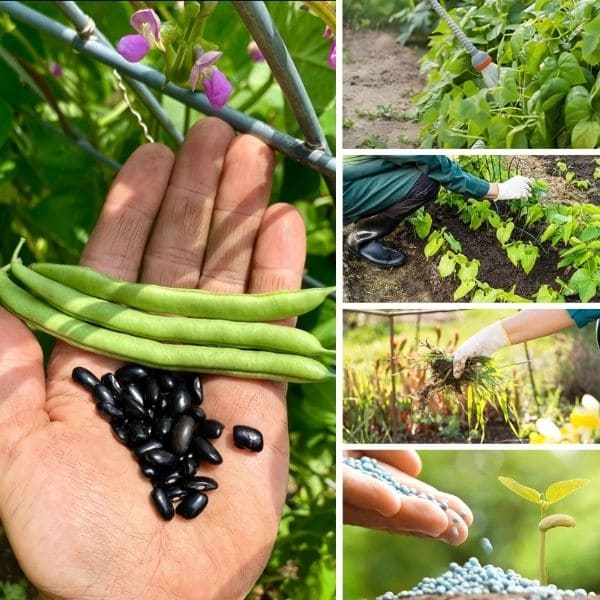
Pests and Diseases
Black bean plants are susceptible to pests like aphids, Mexican bean beetles, bean leaf beetles, and spider mites, which can distort leaves and weaken plants.
You can manage them by checking regularly and using natural controls like insecticidal soaps or beneficial insects.
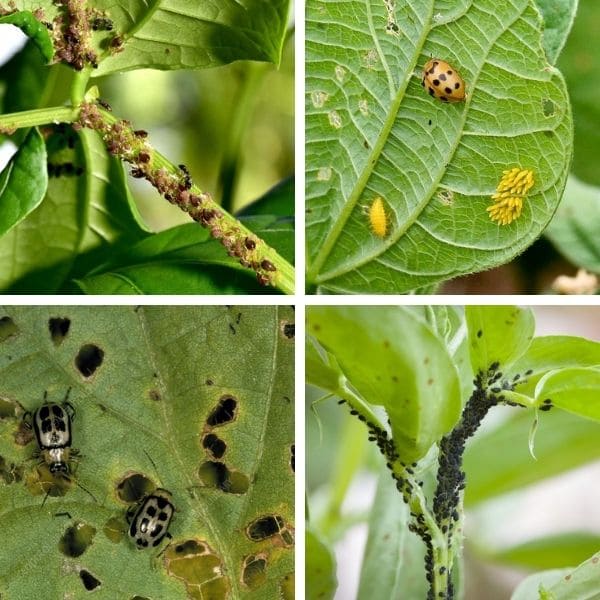
Besides, diseases such as anthracnose, root rot, bacterial blight, and viruses also threaten, causing lesions, reduced yield, and bean plant decline.
Prevent diseases with crop rotation, good soil drainage, and fungicide applications as needed.
Additionally, you can choose disease-resistant varieties and maintain plant health with proper watering and nutrition.

Common Problems
Not Germination
Your black beans plants not germinating may come from improper planting depth or cold soil temperatures.
You should ensure seeds are high quality and planted at the correct depth in warm soil conditions to improve germination rates.
Yellow Leaves
Yellowing bean leaves can indicate various issues such as nutrient deficiencies (particularly nitrogen), overwatering, or poor soil drainage.
Therefore, you need to address nutrient needs and ensure proper watering practices to alleviate yellowing.
Poor Pollination
Insufficient pollination can lead to fewer bean pods. You can encourage pollination by attracting pollinators like bees or gently shaking plants to release pollen.
Besides, you should provide a diverse garden environment with flowering plants to enhance pollinator activity.
Harvest
Around 90 to 120 days after planting, your black beans are ready with firm, dark, and dried pods.
Now, you can use pruning shears or scissors to cut the entire plant near the base for ease.
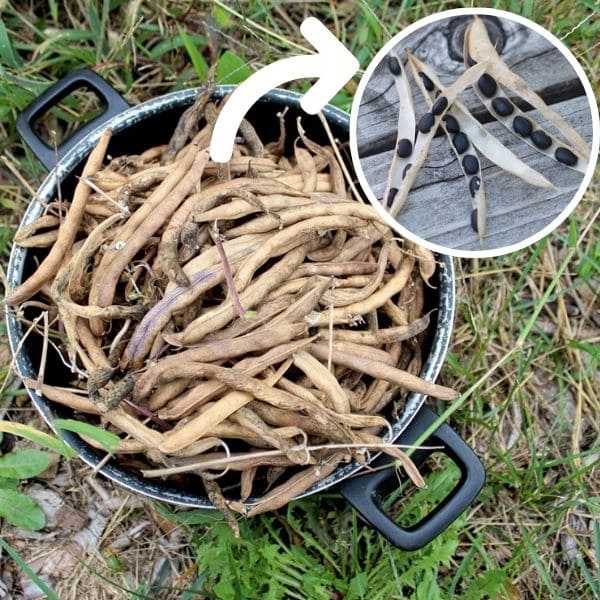
Preservation
After harvesting black beans, shell the beans and store them in airtight containers to prevent mold and spoilage.
You also need to avoid storing beans in humid or warm environments, as this can lead to moisture buildup and deterioration.
Properly stored, black beans can last for up to 1 year, retaining their flavor and nutritional value.
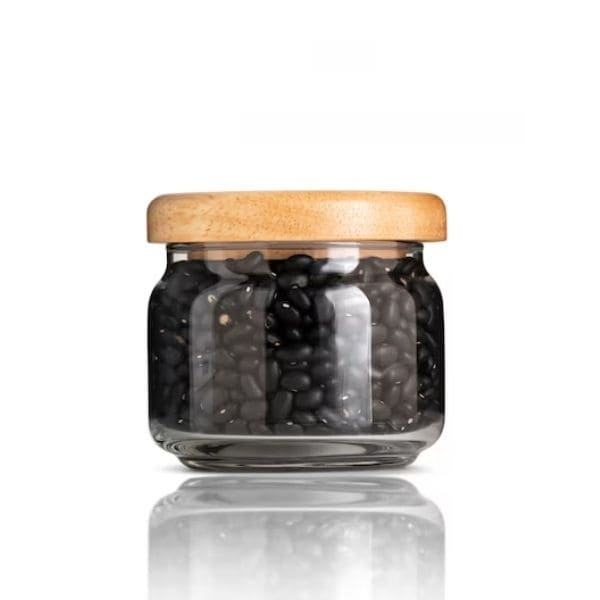
FAQs
Is it safe to eat sprouted black beans?
Yes, it’s safe to eat sprouted black beans as long as they are cleaned and cooked to ensure any harmful bacteria are eliminated.
How to make sprouts bacteria free?
You should soak the seeds in a solution of water and a few drops of bleach or hydrogen peroxide for about 10 minutes, and ensure they sprout in a clean, sanitized environment.
How do you sprout black beans in a bag?
You need to rinse and soak the beans overnight, then drain them and place them in a clean, damp paper towel.
Next, you put the towel with the beans in a resealable plastic bag and place it in a warm, dark place. Within a few days, the beans should sprout.
